Slider
Featured Post
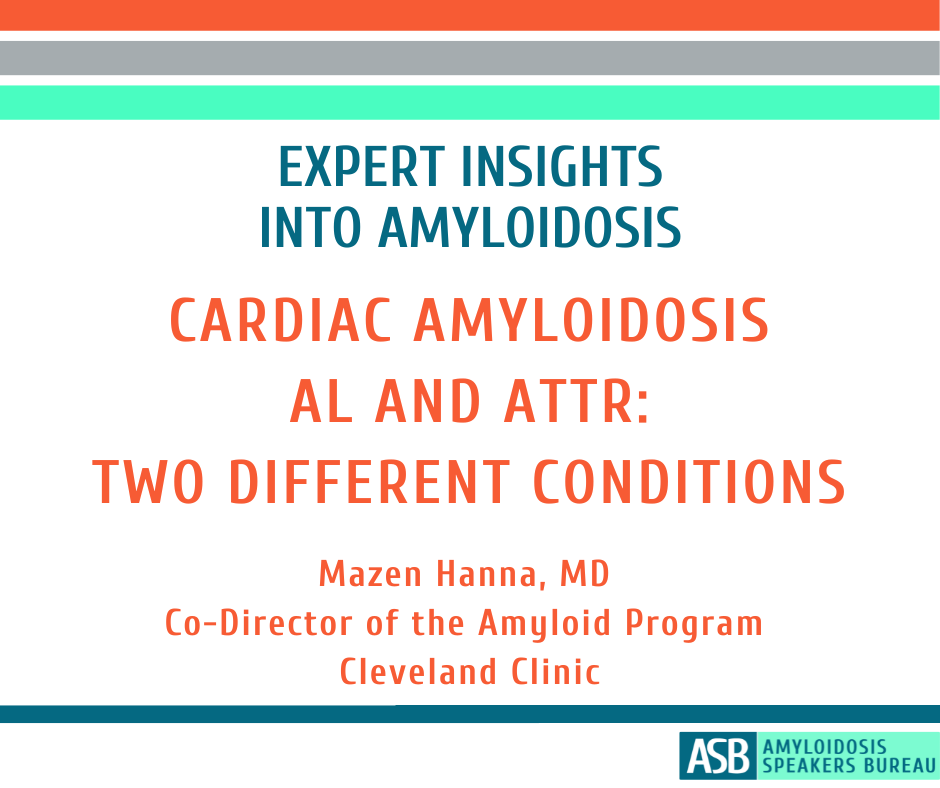
Cardiac Amyloidosis - AL and ATTR: Two Different Conditions
LIBRARY

Cardiomyopathy & Amyloidosis
Cardiomyopathy is a broad term that is used to describe…
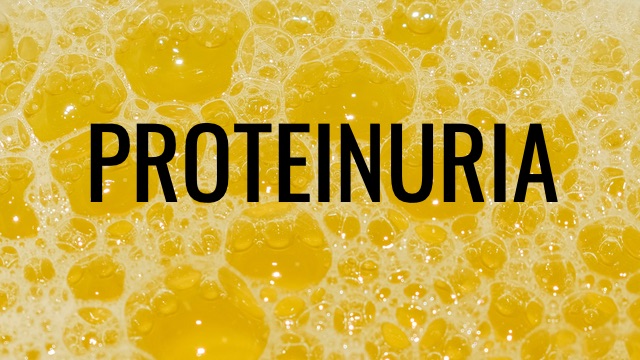
Proteinuria & Amyloidosis
Proteinuria, which has been described as foamy urine, is a…

Patient Insights: West African Descent – BE…
Our patient speakers at the Amyloidosis Speakers Bureau are powerful…

Patient Insights: Stay Curious
Our patient speakers at the Amyloidosis Speakers Bureau are powerful…

Patient Insights: Not Every Symptom is Amyloidosis
Our patient speakers at the Amyloidosis Speakers Bureau are powerful…

Clinical Trials
Clinical research is simply medical research involving people. Here we…

Expert Insights: Amyloidosis – A Brief Clinical…
Dr. Sarah S. Lee, Assistant Professor, Division of Hematology, at…

Cardiac Amyloidosis – AL and ATTR: Two…
Dr. Mazen Hanna, cardiologist at the Cleveland Clinic and co-director…
Disease Overview

Expert Insights: Amyloidosis – A Brief Clinical…
Dr. Sarah S. Lee, Assistant Professor, Division of Hematology, at…

Cardiac Amyloidosis – AL and ATTR: Two…
Dr. Mazen Hanna, cardiologist at the Cleveland Clinic and co-director…

Orthopedic Manifestations in Amyloidosis
Dr. Mazen Hanna, cardiologist at the Cleveland Clinic and co-director…
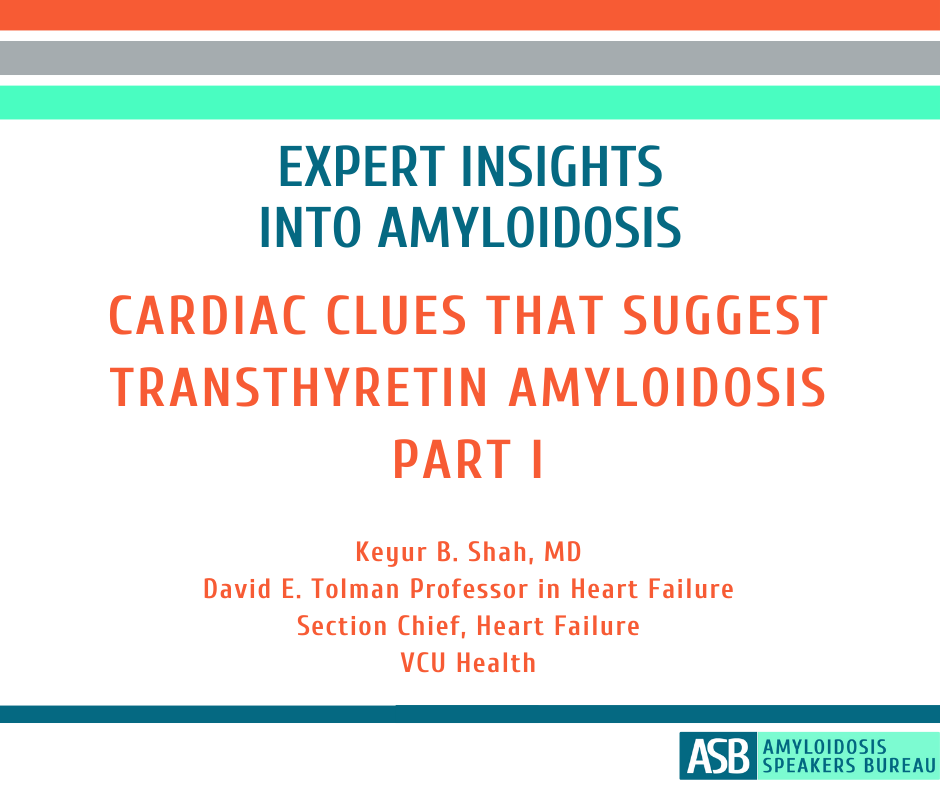
Cardiac Clues that Suggest Transthyretin Amyloidosis –…
In part 1 of a 2-part series, Dr. Keyur Shah,…
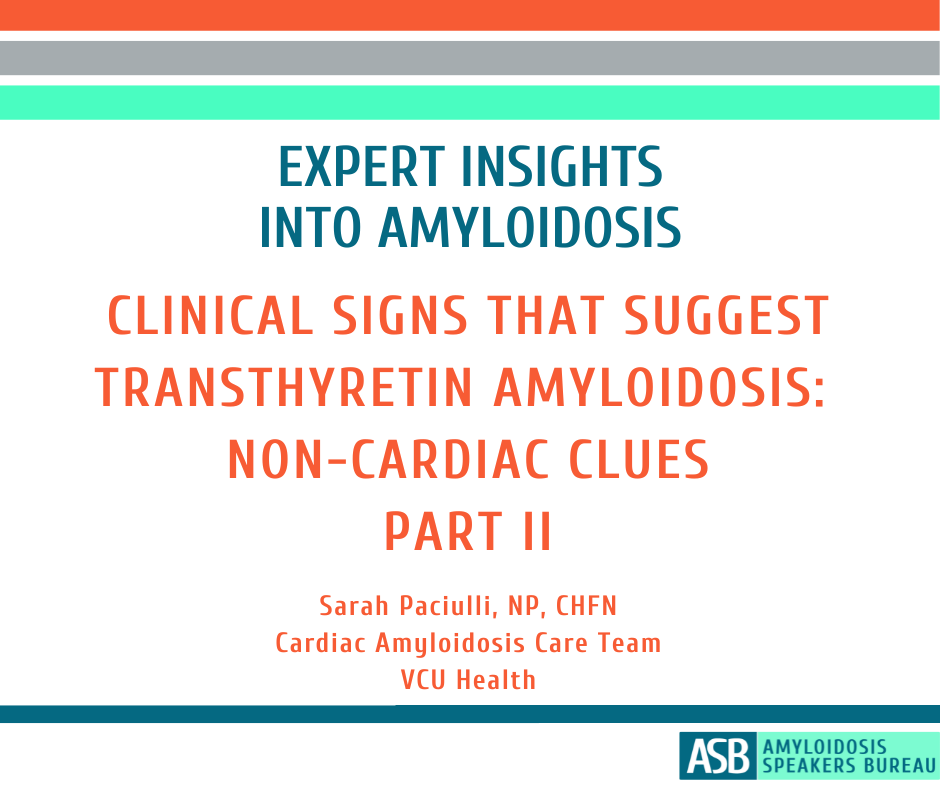
Clinical Signs that Suggest Transthyretin Amyloidosis: Non-cardiac…
In part 2 of a 2-part series, Sarah Paciulli, Heart…
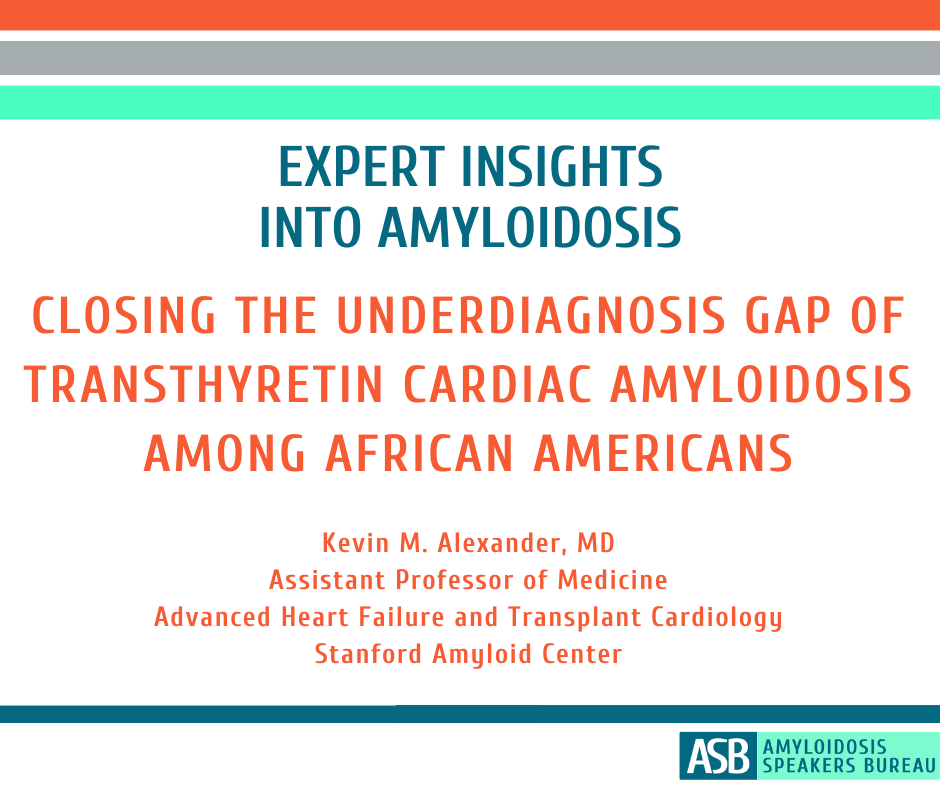
Closing the Underdiagnosed Gap of Transthyretin Cardiac…
Dr. Kevin Alexander, advanced heart failure and transplant cardiologist at…
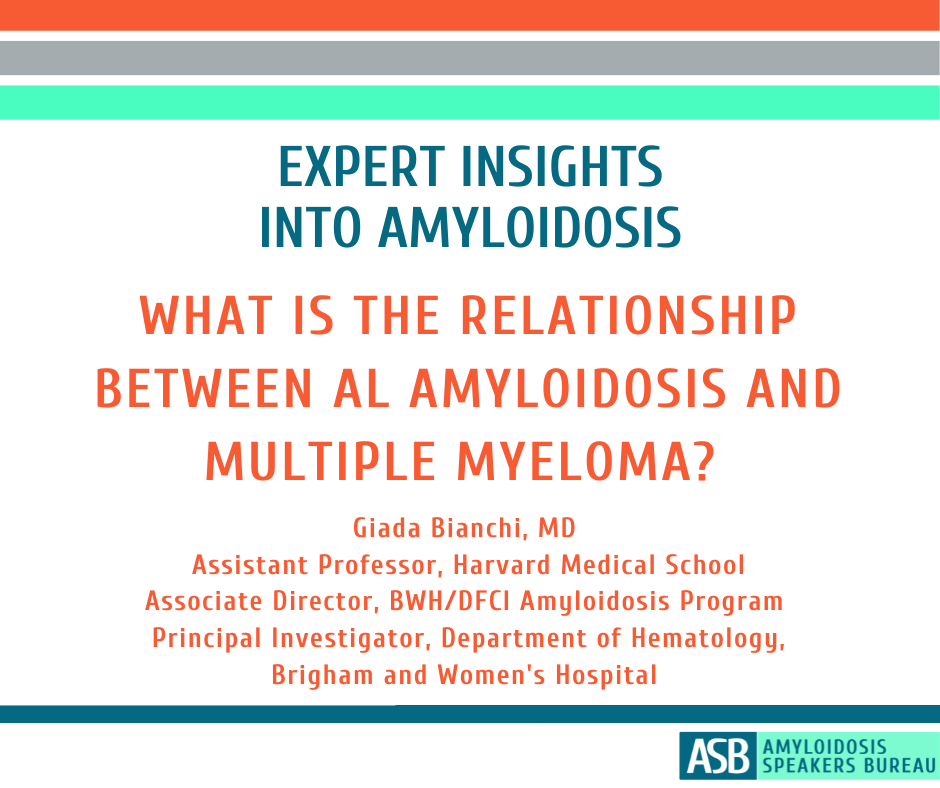
Expert Insights: What is the Relationship between…
While both AL Amyloidosis and Multiple Myeloma are plasma cell…
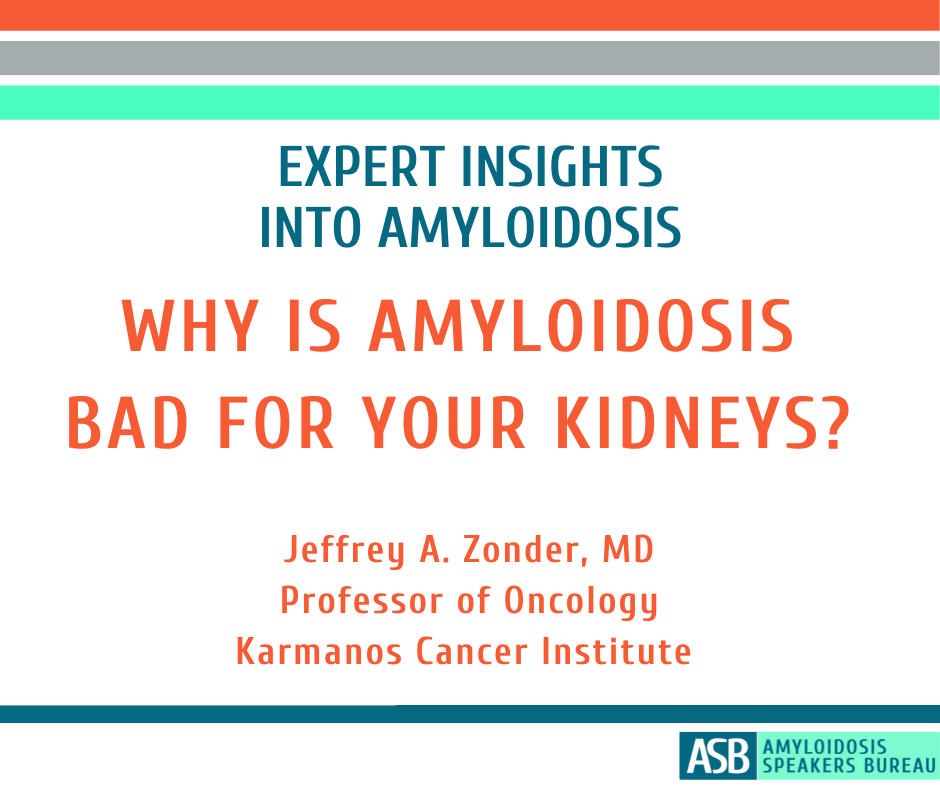
Expert Insights: Why is Amyloidosis Bad for…
One of the organs most frequently impacted by amyloidosis is…
Symptoms

Cardiomyopathy & Amyloidosis
Cardiomyopathy is a broad term that is used to describe…

Proteinuria & Amyloidosis
Proteinuria, which has been described as foamy urine, is a…

Patient Insights: West African Descent – BE…
Our patient speakers at the Amyloidosis Speakers Bureau are powerful…

Expert Insights: Amyloidosis – A Brief Clinical…
Dr. Sarah S. Lee, Assistant Professor, Division of Hematology, at…

Cardiac Amyloidosis – AL and ATTR: Two…
Dr. Mazen Hanna, cardiologist at the Cleveland Clinic and co-director…

Orthopedic Manifestations in Amyloidosis
Dr. Mazen Hanna, cardiologist at the Cleveland Clinic and co-director…

Cardiac Clues that Suggest Transthyretin Amyloidosis –…
In part 1 of a 2-part series, Dr. Keyur Shah,…

Clinical Signs that Suggest Transthyretin Amyloidosis: Non-cardiac…
In part 2 of a 2-part series, Sarah Paciulli, Heart…
Diagnosis

Cardiomyopathy & Amyloidosis
Cardiomyopathy is a broad term that is used to describe…

Proteinuria & Amyloidosis
Proteinuria, which has been described as foamy urine, is a…

Patient Insights: West African Descent – BE…
Our patient speakers at the Amyloidosis Speakers Bureau are powerful…

Patient Insights: Stay Curious
Our patient speakers at the Amyloidosis Speakers Bureau are powerful…

Expert Insights: Amyloidosis – A Brief Clinical…
Dr. Sarah S. Lee, Assistant Professor, Division of Hematology, at…

Cardiac Amyloidosis – AL and ATTR: Two…
Dr. Mazen Hanna, cardiologist at the Cleveland Clinic and co-director…

Orthopedic Manifestations in Amyloidosis
Dr. Mazen Hanna, cardiologist at the Cleveland Clinic and co-director…

Cardiac Clues that Suggest Transthyretin Amyloidosis –…
In part 1 of a 2-part series, Dr. Keyur Shah,…
Treatment

Patient Insights: Not Every Symptom is Amyloidosis
Our patient speakers at the Amyloidosis Speakers Bureau are powerful…

Clinical Trials
Clinical research is simply medical research involving people. Here we…

Expert Insights: Amyloidosis – A Brief Clinical…
Dr. Sarah S. Lee, Assistant Professor, Division of Hematology, at…

Expert Insights: The Future for Patients with…
The treatment for patients with Transthyretin Cardiac Amyloidosis has advanced…
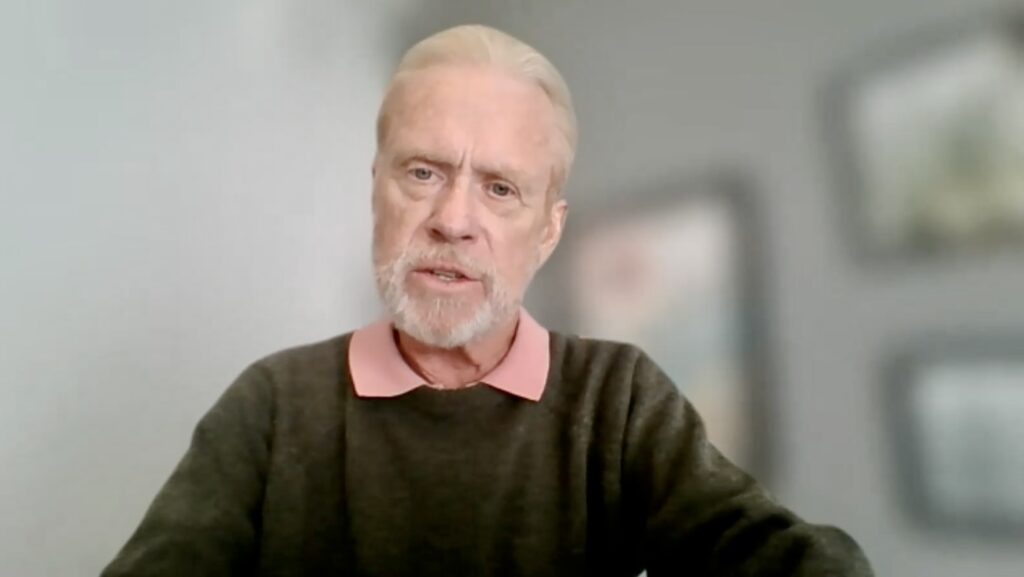
Patient Insights: Seeking a second opinion
Our patient speakers at the Amyloidosis Speakers Bureau are powerful…

Expert Insights: Role of Interdisciplinary Care Teams…
Dr. Melissa Lyle from the Mayo Clinic offers insights into…

Expert Insights: Ensuring Adequate Racial and Ethnic…
Dr. Frederick Ruberg, cardiologist at the Boston University Amyloidosis Center,…
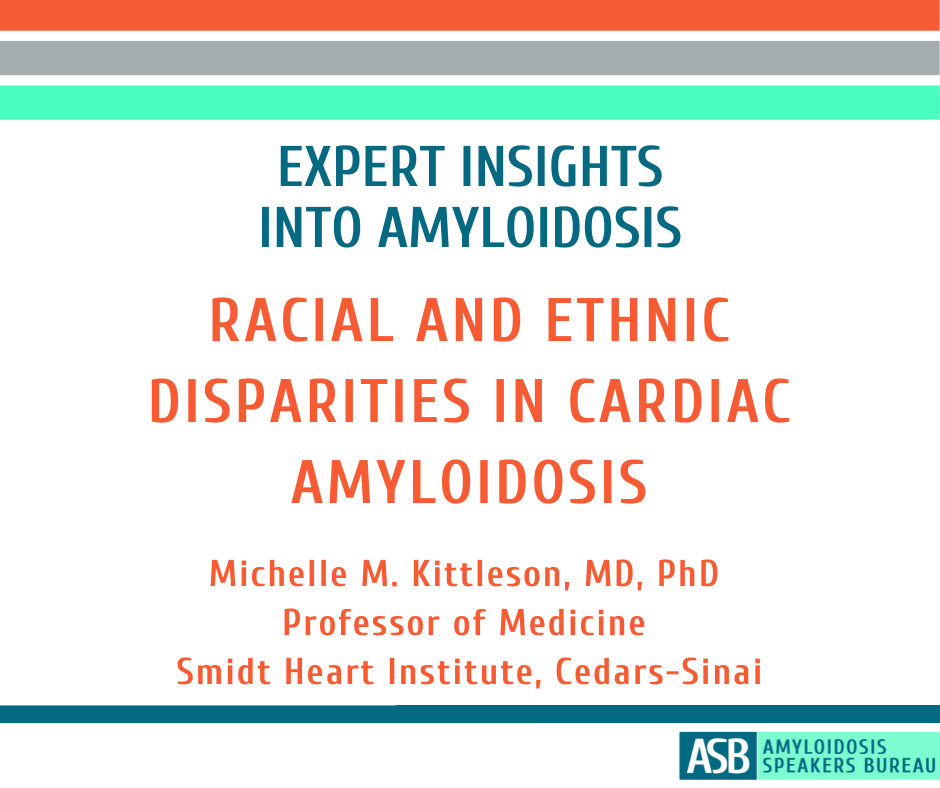
Expert Insights: Racial and Ethnic Disparities in…
Dr. Michelle Kittleson from Cedars-Sinai discusses the five domains defining…
Caregivers
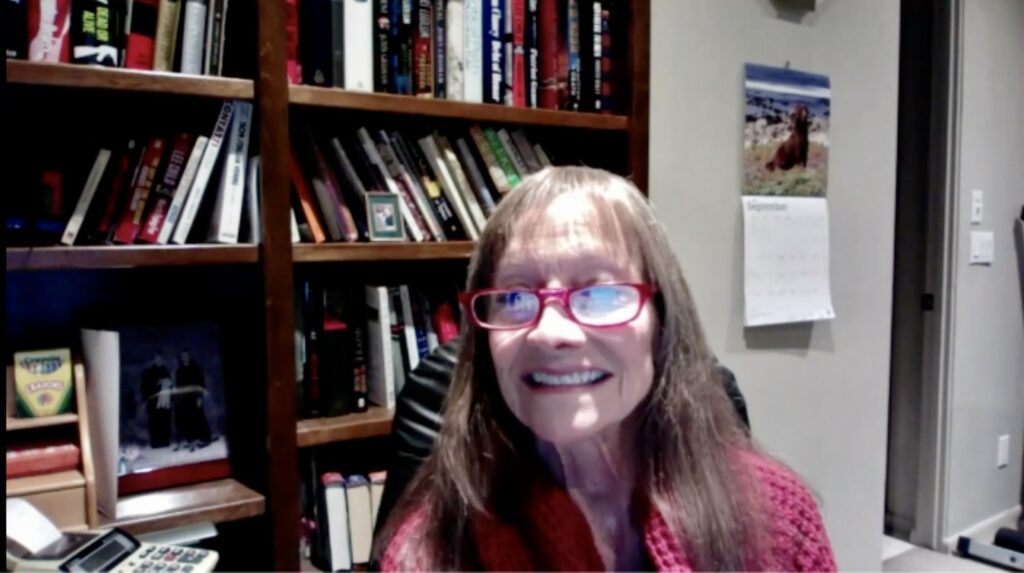
Patient Insights: Impact on a Family
Our patient speakers at the Amyloidosis Speakers Bureau are powerful…

Expert Insights: Role of Interdisciplinary Care Teams…
Dr. Melissa Lyle from the Mayo Clinic offers insights into…

Expert Insights: Ensuring Adequate Racial and Ethnic…
Dr. Frederick Ruberg, cardiologist at the Boston University Amyloidosis Center,…

Expert Insights: Racial and Ethnic Disparities in…
Dr. Michelle Kittleson from Cedars-Sinai discusses the five domains defining…
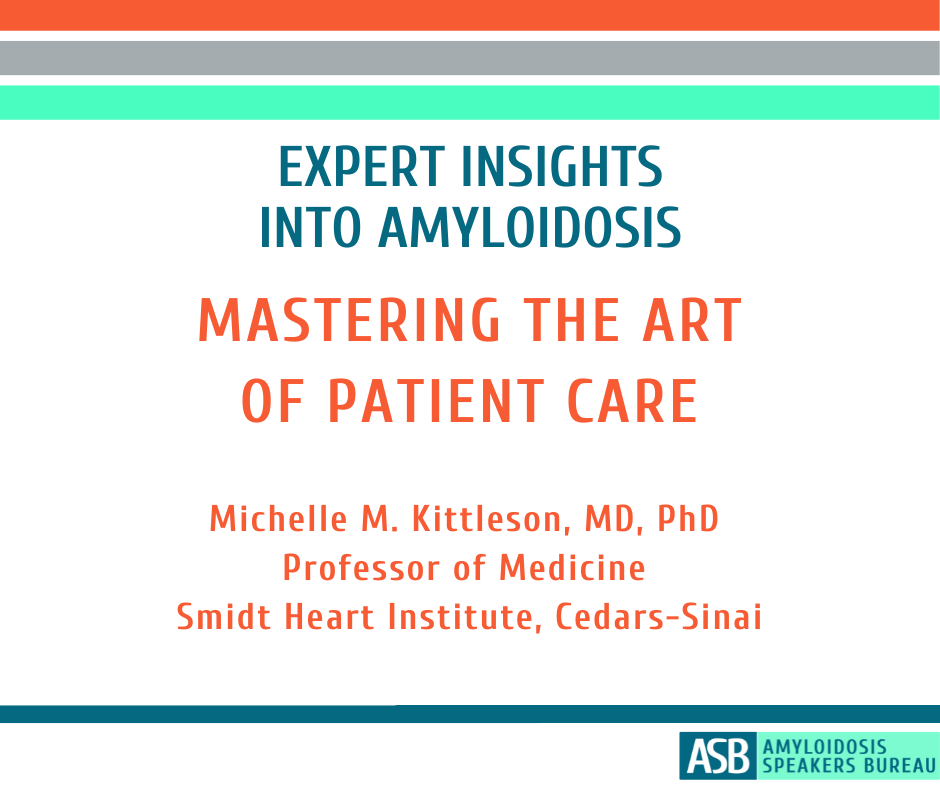
Expert Insights: Mastering the Art of Patient…
Based on all the lessons she learned, coupled with the…

Patient Insights: Giving a devastating diagnosis
Our patient speakers at the Amyloidosis Speakers Bureau are powerful…

Multidisciplinary Care for Cardiac Amyloidosis Patients
Multi-systemic diseases such as amyloidosis are not only complex to…

Patient Insights: So many medical specialists
Our patient speakers at the Amyloidosis Speakers Bureau are powerful…
Expert Insights

Expert Insights: Amyloidosis – A Brief Clinical…
Dr. Sarah S. Lee, Assistant Professor, Division of Hematology, at…

Cardiac Amyloidosis – AL and ATTR: Two…
Dr. Mazen Hanna, cardiologist at the Cleveland Clinic and co-director…

Orthopedic Manifestations in Amyloidosis
Dr. Mazen Hanna, cardiologist at the Cleveland Clinic and co-director…

Cardiac Clues that Suggest Transthyretin Amyloidosis –…
In part 1 of a 2-part series, Dr. Keyur Shah,…

Clinical Signs that Suggest Transthyretin Amyloidosis: Non-cardiac…
In part 2 of a 2-part series, Sarah Paciulli, Heart…

Closing the Underdiagnosed Gap of Transthyretin Cardiac…
Dr. Kevin Alexander, advanced heart failure and transplant cardiologist at…

Expert Insights: What is the Relationship between…
While both AL Amyloidosis and Multiple Myeloma are plasma cell…

Expert Insights: Why is Amyloidosis Bad for…
One of the organs most frequently impacted by amyloidosis is…
Patient Insights

Patient Insights: West African Descent – BE…
Our patient speakers at the Amyloidosis Speakers Bureau are powerful…

Patient Insights: Stay Curious
Our patient speakers at the Amyloidosis Speakers Bureau are powerful…

Patient Insights: Not Every Symptom is Amyloidosis
Our patient speakers at the Amyloidosis Speakers Bureau are powerful…
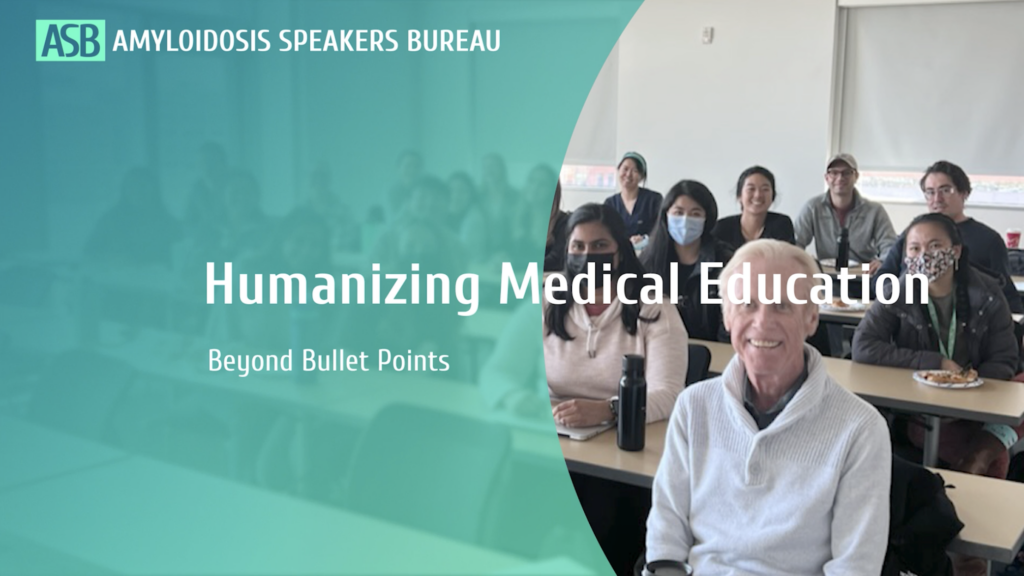
Humanizing Medical Education: Beyond Bullet Points
The content of medical education is appropriately clinically centered. The…
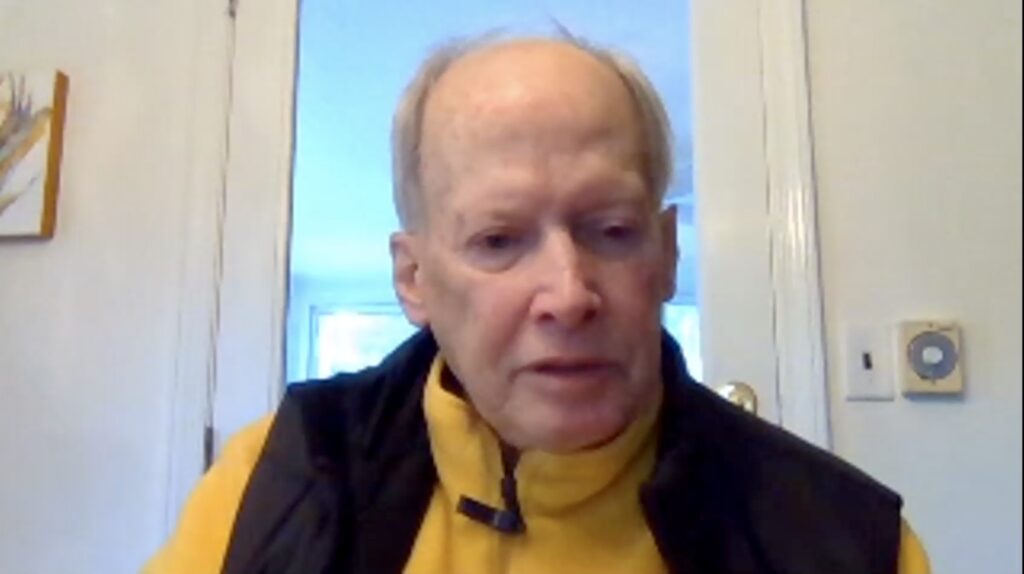
Patient Insights: Be a medical detective
Our patient speakers at the Amyloidosis Speakers Bureau are powerful…

Patient Insights: I have to advocate for…
With a rare disease, it is difficult to expect the…

Patient Insights: Discussing a hereditary disease with…
With a hereditary disease, talking with relatives can be challenging.…

Patient Insights: Diagnosis was a huge relief
Have a listen to this brief clip from Sean with…
Join the Fight Against Amyloidosis!
Subscribe for Updates, Insights, and Ways to Make a Difference
